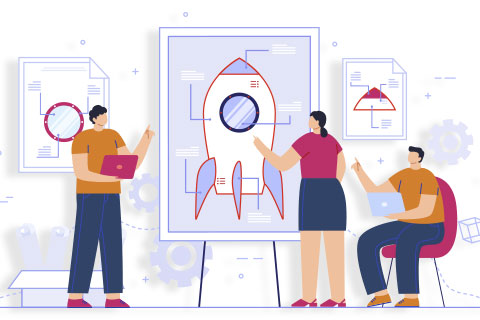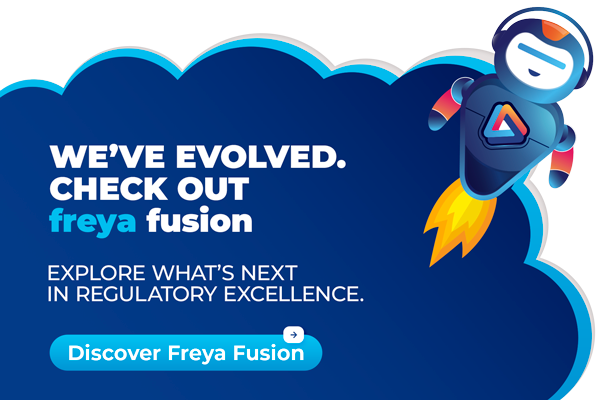
The fast-evolving and dynamic environment of the pharma industry calls for an equally active and quick technology. There is a rise in compliance technology due to various factors like robust regulatory adherence and efficiency in medical operations. There are various touchpoints and processes to keep in mind while dealing with the complexities of compliance regulations such as regulatory information management, compliance submissions, regulatory document management, and much more. This blog highlights the rising need for such technologies in today's Pharmaceutical Regulatory Affairs
Compliance Submissions: A data-driven approach
Navigating the maze of compliance submissions is tricky. In 2023, almost 70% of service organizations said they need to demonstrate compliance or conformity to at least six frameworks spanning information security and data privacy taxonomies. Keeping in mind all the framework, creating and submitting compliance as well as being aware of eCTD guidelines and timelines, are some of the few processes that can be automated and improved with technological accuracy.
Document Management: Navigating a Paperless Future
In clinical trials, human subject trials must be protected and approved by the Food and Drug Administration (FDA) and local Institutional Review Boards (IRB). While a single clinical trial with a small number of clinical participants can be manually documented, multicentral clinical trials with numerous clinical sites and multiple studies simultaneously carried out create are challenge for regulatory documentation. This calls for a great need for an automated and computerized regulatory document management system that is easily accessible, efficiently manages project activities, and tracks regulatory compliance.
Regulatory Information Management (RIM) Solutions: Streamlining Compliance Process
Management of regulatory information throughout all the stages of pharmaceutical production is a key challenge faced by the industry. Various competitive markets and different regulatory laws as well as documents being recorded in separate systems can complicate and delay the entire production process. Due to this, RIM systems are required to consolidate and integrate such information for a holistic and efficient approach to RIM and regulatory compliance. Adoption of such systems can provide advanced analytics, smoothen workflow, and extract necessary insights to apply in regulatory strategic decision-making.
Label Management: Ensuring Compliance and Safety
Several regulatory bodies oversee labeling guidelines like the FDA in the US. Apart from them, there are legal bodies that mandate several labeling standards and regulations in specific industries like cosmetics, textiles, and chemicals. FDA drug recall data shows between 2017 and 2019, 14.9% of recalls were attributed to labeling issues. Statistics have recently highlighted that 9% of medical devices recalled globally were due to labeling errors, a figure which equates to over one million items. The presence of AI automated technologies has several impacts on product labeling like boosted speed and accuracy in compliance practice, provide a better support experience for patients and create more time for innovation and strategizing.
Integration of Compliance Technologies: A Unified Approach
Investment in effective RIM solutions does not only include RIM technology but also changes in organizational processes and data management elements. Individually RIMS will have a small impact, but in a broader context, an integrated set for full regulatory capabilities across the product cycle delivers greater returns than the sum of small, isolated initiatives.
Potential Benefits of Integrated RIM solutions:
- Faster Time to Approval: A unified RIM solution connects planning to execution thus allowing real-time and efficient monitoring. Adoption of a common platform can help drive consistency and reduce wasted efforts such as reviewing or editing the wrong version of a document or needing to validate data brought in from another system.
- Optimize profitability and access to drug products: —Integrating regulatory intelligence and knowledge management with critical processes allows companies to bring new products to more markets more efficiently.
- More efficient use of data, authoring, and submissions: Process visibility, data quality, and simply knowing where to find information and documents can greatly increase resource productivity. The unified RIM system also provides more efficient content use which allows automated content propagation.
- Improved Health Authority Interactions: A unified platform means a leaner and higher quality of submissions, leading to a more efficient review process and building credibility. Higher credibility can lead to speed and reduced regulatory burden.
- IMDP compliance: The new European requirements will lead to companies increasing their structured product information submissions. A unified RIM capability is critical to sourcing and linking data and submissions, supporting the broader supply chain with accurate and accessible global product data.
Convergence of key components – RIMs, labelling management, document management, and compliance submissions- proves to be transformative and efficient. As the industry moves to a paperless future, an integrated solution optimizes resources, ensuring sustained compliance and efficient regulatory submission process. The constantly evolving nature of pharmaceutical compliance promises the growth of more products and technologies. Adopting a holistic approach to compliance submissions and information regulations can boost organizations and solidify their presence in the tech-driven, compliant tomorrow.
